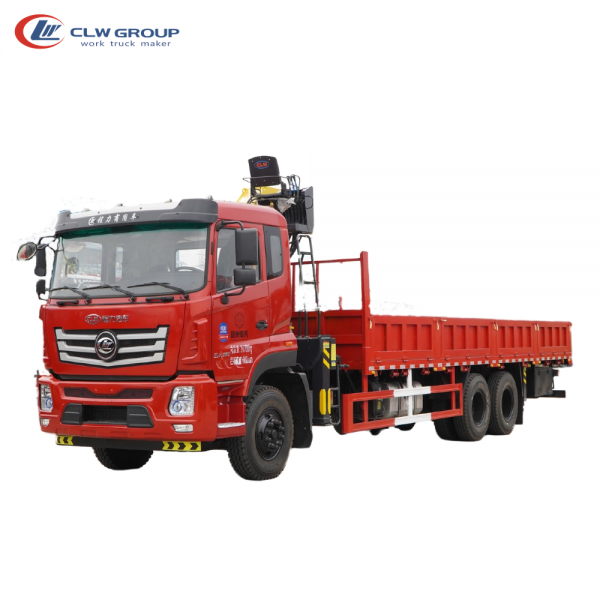Introduction
Truck mounted cranes are essential equipment for various industries such as construction, transportation, and logistics. These versatile machines offer the ability to lift and move heavy loads with ease, making them indispensable for many businesses. When it comes to choosing the right truck mounted crane for your needs, it is important to consider the features and specifications that are available in the market. In this article, we will compare the key features of different truck mounted cranes to help you make an informed decision.
1. Types of Truck Mounted Cranes
There are several types of truck mounted cranes available in the market, each with its own unique features and capabilities. The most common types include:
- Hydraulic Truck Mounted Crane: These cranes are powered by hydraulic systems, which provide smooth and precise lifting operations. They are known for their high lifting capacity and stability, making them ideal for heavy-duty applications.
- Telescopic Boom Truck Mounted Crane: This type of crane features a telescopic boom that can extend and retract to reach different heights. Telescopic boom cranes are versatile and can be used for a wide range of lifting tasks.
- Knuckle Boom Truck Mounted Crane: Knuckle boom cranes have a hinged boom that can bend in the middle, allowing for greater flexibility in reaching tight spaces. These cranes are popular for their compact design and maneuverability.
2. Lifting Capacity
One of the most important features to consider when comparing truck mounted cranes is their lifting capacity. The lifting capacity of a crane is determined by the maximum weight it can lift safely. Different cranes come with varying lifting capacities, ranging from a few tons to several tons. It is crucial to choose a crane with a lifting capacity that matches your specific lifting requirements.
3. Reach and Working Radius
The reach and working radius of a truck mounted crane refer to the distance it can extend its boom to lift and move loads. The reach and working radius are important considerations, especially when working in confined spaces or on construction sites with obstacles. Cranes with longer reaches are able to access difficult-to-reach areas, while those with shorter reaches are more suitable for compact work environments.
4. Boom Length and Extension
The boom length and extension of a truck mounted crane determine how far it can reach vertically and horizontally. Longer booms allow cranes to lift loads to greater heights, while shorter booms are more suitable for tasks that require precise positioning. Some cranes come with telescopic booms that can be extended and retracted to adjust the reach as needed.
5. Mobility and Maneuverability
The mobility and maneuverability of a truck mounted crane are crucial factors, especially when working in tight spaces or on rough terrain. Cranes with good mobility can be easily moved around the work site, while those with poor maneuverability may struggle to access certain areas. Consider Long-distance water transport trucks , weight, and turning radius of the crane to ensure it can navigate the work site effectively.
6. Safety Features
Safety is paramount when operating a truck mounted crane, and it is important to consider the safety features that come with the equipment. Some common safety features include overload protection systems, emergency stop buttons, load moment indicators, and outrigger systems for stability. These features help prevent accidents and ensure the safety of operators and bystanders.
7. Control Systems

The control system of a truck mounted crane determines how the crane is operated and controlled. Modern cranes come with advanced control systems that offer precision and ease of operation. Look for cranes with user-friendly control interfaces, remote control options, and safety interlocks for efficient and safe operation.
8. Maintenance and Serviceability
Regular maintenance and servicing are essential to keep a truck mounted crane in optimal working condition. Consider the ease of maintenance and availability of spare parts when comparing different cranes. Choose a crane that is easy to service and repair, with readily available parts to minimize downtime and ensure reliable operation.
9. Cost and Value
Finally, consider the cost and overall value of the truck mounted crane. Compare the prices of different cranes and weigh them against their features, lifting capacity, reach, safety features, and overall performance. Choose a crane that offers the best value for your budget while meeting your specific requirements.
Conclusion
Choosing the right truck mounted crane involves careful consideration of its features, lifting capacity, reach, mobility, safety features, control systems, maintenance, and cost. By comparing these key features, you can select a crane that is well-suited to your needs and provides reliable performance for your lifting tasks. Whether you require a hydraulic crane, telescopic boom crane, or knuckle boom crane, there are a variety of options available in the market to meet your specific requirements. Make an informed decision by evaluating the features of different truck mounted cranes and selecting the one that best fits your needs.
